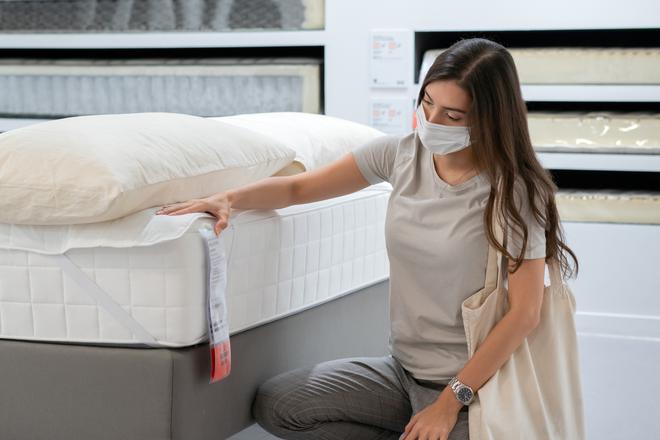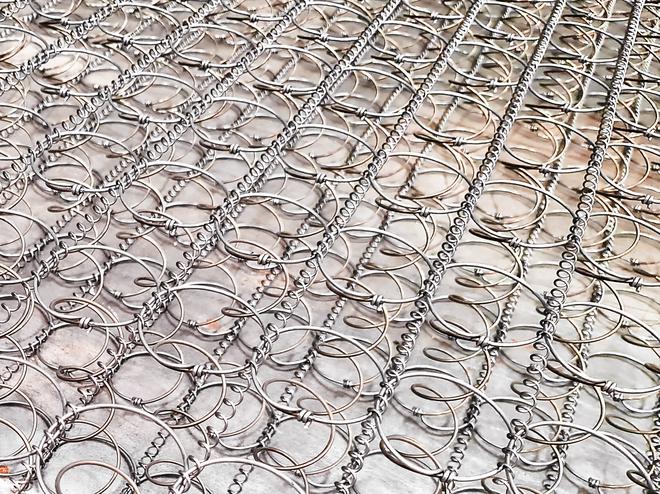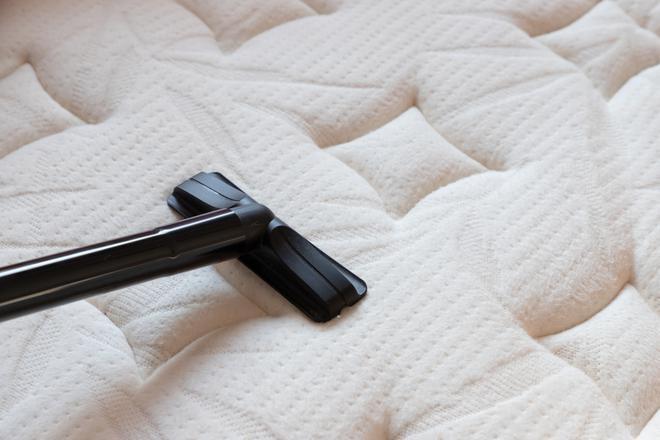Indians are the second-most sleep-deprived people in the world, with an average nightly sleep of seven hours and one minute, according to a 2019 study conducted by the U.S.-based firm Fitbit across 18 countries. They rank after the Japanese, who report an average sleep duration of six hours and 47 minutes. The importance of sleep cannot be stressed enough. Humans need between seven and 10 hours of sleep everyday for proper cognitive and behavioural functions.
According to the School of Public Health, University of Michigan, sleep is essential to every process in the body, “affecting our physical and mental functioning the next day, our ability to fight disease and develop immunity, and our metabolism and chronic disease risk”. A good mattress can make all the difference in how your body — and you — feels when you wake up. Research suggests that sleeping on a medium-firm mattress, especially one with adjustable firmness, can promote comfort, ensure proper spinal alignment, and lead to quality sleep.

Make the right choice
Neelam Dewani, Director of Avit Lifestyle, which has brought Swedish bed brand Hästens to India, says selecting the ideal mattress is a highly individualised process that cannot be achieved through a one-size-fits-all approach. “It’s ideal to get support from a sleep expert in a store who can help you to understand your sleep style and what can work best for you. Factors to be considered include sleeping position, body shape, and weight,” she says.
She adds that a good mattress should provide your body with the appropriate support sans pressure points that may cause pain or discomfort.
“Opt for a mattress made from natural materials that are hypoallergenic and skin-friendly. These natural materials promote breathability, crucial in obtaining a deep, restorative, and healing sleep for overall well-being. Take your time selecting a mattress that can improve the quality of your sleep and overall health,” she says.
Wake up on the right side of the bed
Ankit Garg, CEO and Co-Founder, Wakefit.co, says it is important to pick a mattress that helps provide ample support to the body while keeping one’s back, neck and spine aligned in a neutral position. “Research has proven that the human body needs at least 14 days to adjust to a new mattress. Physical stores that can only provide a touch-and-feel experience and not offer a buy-and-try policy are not the ideal avenue to purchase a mattress,” he says.
According to the Great Indian Sleep Scorecard 2023, there was a 24% increase in the number of people who believe a better mattress will help improve the quality of sleep. In line with this, there has been a significant growth in the organised mattress market, especially in Tier II and Tier III markets, with people becoming cognisant of the benefits that good mattresses provide. “New-age sleep solutions companies are also experimenting with technology such as the Expert Grid Mattress, Gel Foam Mattress etc. which helps with cooling and keeping the temperature of the mattress at an optimal level,” Garg says.
What kind works?
How do you decide between spring, foam, and hybrid matresses? The spring mattress is made up of a layer of coils surrounded by layers of comfort material (latex, natural fibres, or foam). Different coil types and layouts offer varied benefits such as back support, a range of ‘firmnesses’, and budget-friendly options. However, these mattresses — ideal for stomach and back sleepers — tend to wear out more quickly than foam and can be hard on the joints.

Foam mattresses offer different combinations of varied-density foams to provide softness and support. Though memory foam is the most well-known type of foam mattress, there are several different types that provide different benefits. More durable than spring mattresses, these tend to absorb motion of restless sleepers and are less noisy. “However, they are more expensive, can trap body heat, and the softness can often create a ‘sinking’ feeling,” says interior designer Arupa Bose, adding that they work well for side sleepers and those who experience joint pain and discomfort.

The last option — chosen by a majority of people — are hybrid mattresses, which comprise layers of springs and foam. They offer pressure point relief along with back support, regulate temperature better than pure foam mattresses, and can work for people with different firmness preferences, she says.
Garg says a good mattress is one that provides good support, comfort, and durability. Mattresses have changed considerably in their design and build over the last decade. “With conversations around sleep health becoming increasingly prominent, we have been witnessing a growing demand for our flagship orthopaedic memory foam mattresses as they contour to the body, provide pressure relief, and reduce motion transfer. Our XpertGRID and 7 Zone Latex mattresses are also excellent choices as they are breathable, provide motion isolation, and are long-lasting,” he says.
Prices start at ₹5,000 and go up to ₹1,00,000, depending on the size and kind of mattress.

Ways to care
Mattress hygiene is an integral part of quality sleep and help, and it’s important to take care of mattresses.
Clean it: Dewani suggests using a vacuum cleaner (the furniture attachment) for optimal results. “Do not forget to clean the dust-inhibiting cotton lining on the underside of the mattress,” she says.
Use a protector: Garg is in favour of using a waterproof mattress protector to protect it from water and spills. “Keeping dust and grime at bay will increase the mattress’ lifespan,” he says.
When to replace it?
Like any other product, a mattress is also prone to wear and tear and damage, which may ultimately affect your sleep. Wakefit says the average lifespan of mattresses is around seven years.
“However, it also depends on how you care for your mattress, as well as other factors such as body weight, sleeping posture, and more,” Garg says, advising homeowners to rotate mattresses 180 degrees at least once a month to ensure they retain their original state “for the longest time possible”.
Dewani says Hästens beds have a 25-year warranty, but the company suggests exchanging the top layer every five to seven years for optimal comfort and support.
“If you frequently wake up tired or experience body aches, it may be time to consider upgrading to ensure your body receives the quality rest it needs,” she says.







